White weddings hold a special place in the hearts of couples worldwide and are considered a timeless tradition in many cultures. The concept of a white wedding is steeped in meaning and symbolism, representing purity, tradition, and new beginnings. This article aims to explore the significance, customs, ceremonies, and destinations associated with white weddings, shedding light on both historical and modern perspectives.
To understand the origins of white weddings, it is essential to delve into their historical background. White weddings gained popularity during the 19th century when Queen Victoria of England chose to wear a white wedding dress for her nuptials, setting a trend that would continue for generations. This historical event played a significant role in the establishment of the white wedding tradition.
Traditions and customs are integral components of white weddings, and they contribute to the overall beauty and elegance of the occasion. Central elements include the choice of a white wedding dress, traditionally symbolizing purity and innocence, as well as the wearing of a bridal veil, signifying modesty and the reveal of the bride. The flower bouquet and the bridal party, consisting of bridesmaids and groomsmen, play important roles in traditional white weddings.
White wedding ceremonies and rituals are deeply intertwined with cultural and religious practices. These ceremonies often take place in venues such as churches, serene outdoor gardens, or breathtaking beaches, each offering its unique ambiance and significance. Key moments during the wedding ceremony include the exchange of vows, where couples profess their love and commitment to one another, as well as the unity ceremony, which symbolizes the merging of two lives into one.
In recent years, modern trends and variations have brought new dimensions to white weddings. Couples have started embracing non-traditional wedding dress colors and styles, allowing for individuality and self-expression. Personalizing ceremony elements, such as writing unique vows or incorporating meaningful rituals, further adds a personal touch to the celebration. Unique wedding themes and imaginative décor choices offer couples the opportunity to create unforgettable and one-of-a-kind experiences.
By exploring the historical roots, customs, ceremonies, popular destinations, and modern trends associated with white weddings, this article aims to provide insight and inspiration for couples planning their own special day. Whether honoring tradition or embracing creativity, the beauty and significance of white weddings continue to capture the hearts and imaginations of couples around the world.
Key takeaway:
- White weddings have a historical background: The tradition of white weddings dates back in history, representing purity and tradition.
- White weddings are filled with traditions and customs: From the white wedding dress and bridal veil to the flower bouquet and bridal party, white weddings encompass various customs that add beauty and significance to the ceremony.
- White weddings can take place in diverse destinations: While traditional church weddings are common, white weddings can also be held in outdoor garden settings or on picturesque beaches, offering couples a range of options.
Meaning and Significance of White Weddings
In the vibrant world of wedding traditions, white weddings hold a special meaning. Today, we will explore the enchanting realm of white weddings, their significance, and delve into the historical background that birthed this timeless tradition. Get ready to uncover intriguing stories and unravel the historical threads that have woven white weddings into the tapestry of matrimonial celebrations.
Historical Background of White Weddings
White weddings have a rich historical background that dates back centuries. They originated in Western cultures and have become a popular tradition worldwide. Understanding the historical background of white weddings provides insight into the significance and symbolism behind this cherished celebration.
1. Early Origins: The historical background of white weddings can be traced back to ancient Roman and Greek civilizations. The color white was associated with joy, purity, and new beginnings, making it the ideal choice for wedding ceremonies.
2. Evolution of Tradition: The historical background of white weddings gained prominence during the Victorian era in the 19th century. Queen Victoria's wedding to Prince Albert in 1840 had a significant impact on bridal fashion and customs. It was Queen Victoria who set the trend for future brides by wearing a white wedding dress.
3. Symbolism: Understanding the historical background reveals that white symbolizes purity, innocence, and the bride's virginity. Throughout history, brides wore elaborate white gowns to showcase their modesty and virtue. Moreover, white was considered a mark of social status as only wealthy families could afford such luxurious fabrics.
4. Influence of Media: The rise of mass media in the 20th century further popularized the historical background of white weddings. Movies, magazines, and advertisements prominently featured glamorous brides in stunning white dresses, inspiring countless couples to follow suit.
5. Cultural Variations: While white weddings are common in Western cultures, it's important to recognize that other cultures have their own unique wedding traditions. For instance, in some Asian cultures, the bride may wear a red dress symbolizing luck and prosperity. Nonetheless, white weddings have transcended borders and are now embraced in diverse cultural contexts. Understanding the historical background of white weddings adds depth and meaning to this cherished tradition. It allows couples to connect with centuries-old customs and appreciate the symbolism behind their special day. When planning your own white wedding, consider incorporating elements from different eras or cultures to create a unique and personalized experience. Explore vintage-inspired dresses, traditional rituals, or historical venues to add a touch of historical charm to your celebration. By embracing the historical background of white weddings, you can create a memorable and meaningful experience for you and your loved ones.
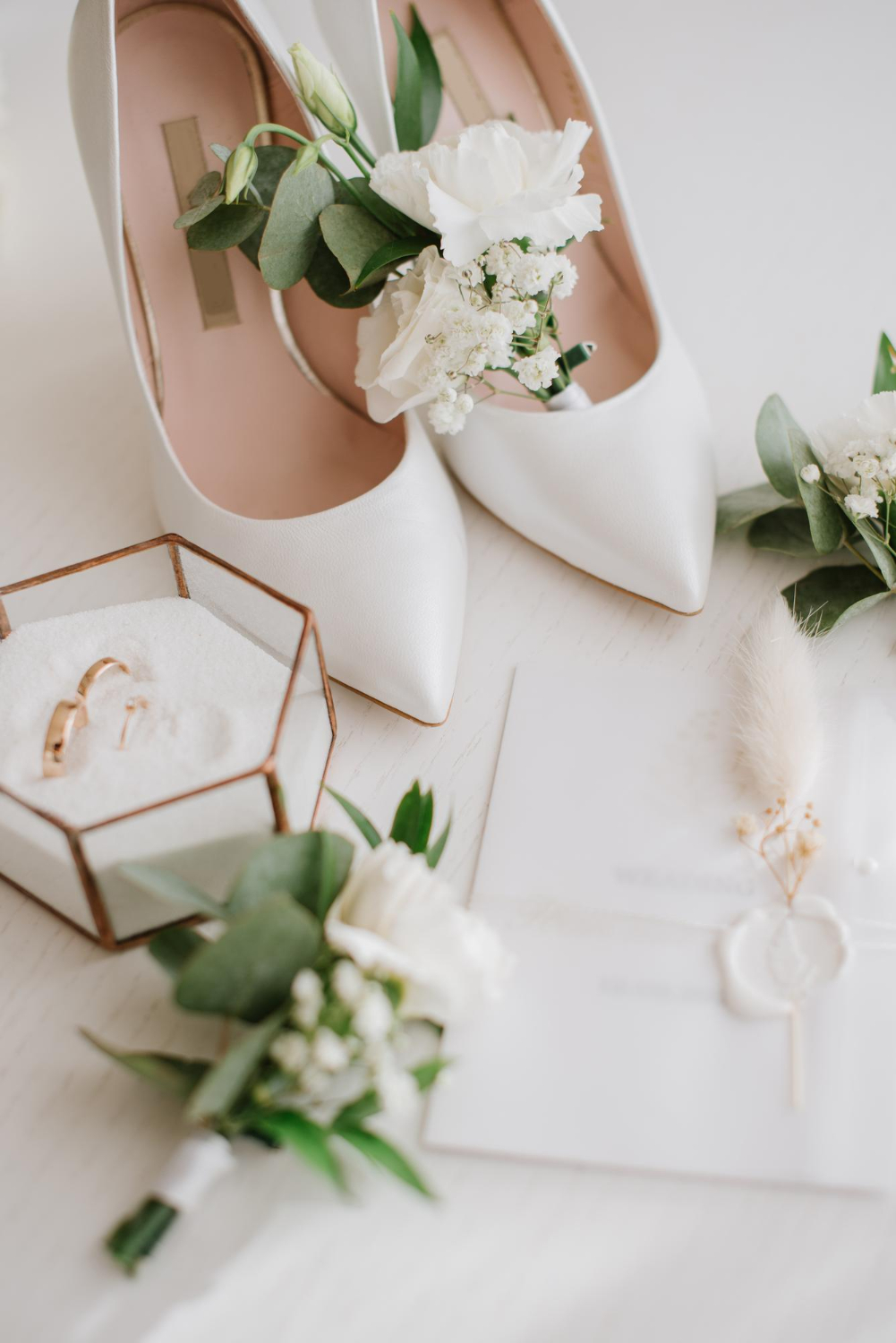
Traditions and Customs of White Weddings
Discover the enchanting world of white weddings as we explore the rich traditions and customs that make them truly special. From the iconic white wedding dress that symbolizes purity and elegance, to the delicate bridal veil that adds an air of mystery, to the vibrant flower bouquet that expresses love and joy, and the cherished bridal party that stands by the couple's side. Join us on this journey and uncover the captivating rituals and magical moments that make white weddings a celebration to remember.
The White Wedding Dress
The white wedding dress is a central element of traditional weddings, symbolizing purity, innocence, and the beginning of a new chapter in a couple's life together. Here are some key points to consider when it comes to the white wedding dress:
- Historical significance: The tradition of wearing a white wedding dress dates back to the 19th century when Queen Victoria set the trend by choosing a white gown for her wedding. This sparked a desire among brides to emulate her style and symbolism.
- Symbolism of purity: The white color of the wedding dress represents purity and virginity. Although this symbolism has evolved over time, many brides still choose a white dress to embody the idea of a fresh start and the beginning of a pure union.
- Various styles and designs: From classic ball gowns to sleek mermaid silhouettes, there is a wide range of white wedding dress styles to choose from. Brides can explore different necklines, fabrics, and embellishments to find a dress that reflects their personal taste and complements their body shape.
- Accessories and embellishments: The white wedding dress can be enhanced with various accessories and embellishments to add personal touches and create a unique look. This can include lace overlays, beading, embroidery, or even colored accents to add a touch of individuality.
- Customization opportunities: Brides can also opt for custom-made white wedding dresses, allowing them to work closely with designers to create a dress that is tailored to their specific preferences and style.
- Keeping traditions or breaking conventions: While white remains the traditional choice for wedding dresses, some brides are exploring non-traditional options. They may choose ivory, blush, or even bold-colored dresses to express their personality or match the wedding theme.
When choosing the white wedding dress, it is essential to consider the individual's style, body shape, and comfort. It should reflect the bride's personality and make her feel confident and beautiful on her special day.
Remember, there is no right or wrong choice when it comes to the white wedding dress. It is a personal decision that allows the bride to create a memorable and meaningful experience. Whether embracing tradition or breaking conventions, the white wedding dress remains a symbol of love and celebration.
The Bridal Veil
The bridal veil, an essential accessory in a white wedding, holds significant symbolic meaning for the bride. Made traditionally from a sheer fabric, the veil's length can vary between short and long. Let's delve into the various aspects of the bridal veil:
| Symbolism | Details |
| The Bridal Veil symbolism: | It represents the bride's purity, modesty, and innocence. Additionally, it serves the purpose of warding off evil spirits and protecting the bride from misfortunes. |
| Traditional Length: | The length can range from shoulder-length to floor-length. Among them, the most formal are cathedral-length veils, which extend beyond the wedding gown's hem. |
| Modern Variations: | Modern brides have the freedom to choose from a variety of styles and lengths to match their personal taste and wedding theme. Some popular options are blusher veils, birdcage veils, and fingertip-length veils. |
| Embellishments: | Lace, beading, or embroidery are commonly used to enhance the overall beauty and elegance of bridal veils. These embellishments can be customized to match the wedding gown. |
| Veil Attachment: | Bridal veils are typically attached to a comb or headpiece, allowing for easy placement and removal during the wedding ceremony and reception. |
| Significance in the Ceremony: | The bride's face is often covered with the veil, symbolizing her transition from single life to marriage. A cherished tradition is the unveiling moment when the groom lifts the veil to reveal the bride's face. |
When selecting a bridal veil, brides should consider the length that complements their wedding dress and the desired overall look. It's important to try on various styles to find the perfect one that makes them feel beautiful and confident on their special day. The Bridal Veil holds profound symbolic meaning and adds an elegant touch to a white wedding. Whether the style is traditional or modern, the veil is a cherished accessory that enhances the bride's beauty and completes her bridal ensemble.
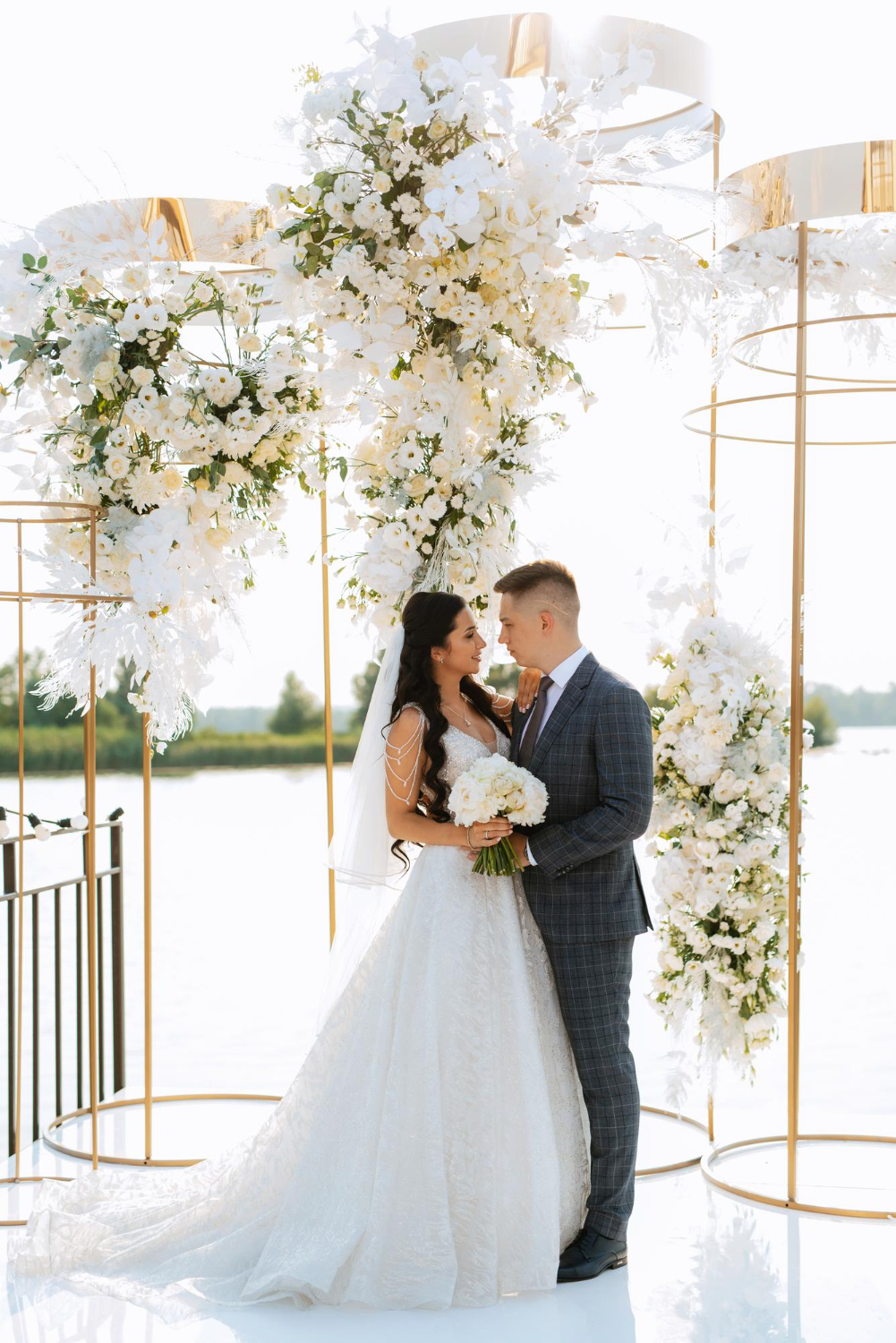
The Flower Bouquet
When it comes to white weddings, the flower bouquet holds a significant role in the overall aesthetics and symbolism of the ceremony. Here are some important aspects to consider:
- Flower selection: The choice of flowers for the bouquet is a personal decision. Popular options include roses, lilies, peonies, and orchids. The flowers should complement the bride's dress and the theme of the wedding.
- Color coordination: Coordinate the colors of the flowers with the wedding color scheme. Opt for shades that enhance the overall aesthetic and create a cohesive look.
- Size and shape: Consider the size and shape of the bouquet, as it should suit the bride's body proportions and the formality of the event. Bouquets can range from small and round to cascading and dramatic.
- Floral accessories: Enhance the bouquet with additional elements such as ribbons, lace, or jewels. These accessories can add a touch of elegance or personalization to the bouquet.
- Symbolism: Flowers hold different meanings, so choose blooms that resonate with the couple's values or represent their love story. For example, roses symbolize love and passion, while lilies represent purity and beauty.
- Seasonal flowers: Opt for flowers that are in season during the wedding to ensure their freshness and availability. This can also be a more cost-effective option.
- Bouquet preservation: To preserve the memories of the special day, consider preserving the bouquet. Techniques such as drying or pressing the flowers can help keep them intact for years to come.
The flower bouquet is a cherished element of a white wedding, symbolizing beauty, love, and new beginnings. It adds a touch of elegance and completes the bride's ensemble as she walks down the aisle. By considering these factors, couples can choose a flower bouquet that perfectly complements their white wedding and creates a lasting impression.
The Bridal Party
The Bridal Party is an essential part of a white wedding ceremony, playing significant roles and adding to the overall celebration. Here are some key aspects to consider when it comes to
1. Bridesmaids and Groomsmen: The Bridal Party typically consists of close friends and family members who support the bride and groom throughout the wedding planning process and on the big day. The bridesmaids assist The Bridal Party with various tasks, such as dress shopping, wedding preparations, and offering emotional support. The groomsmen fulfill similar roles for the groom.
2. Maid of Honor and Best Man: The maid of honor is usually the bride's closest friend or sister who takes on a leadership role within The Bridal Party. She stands alongside the bride during the ceremony and helps coordinate the bridesmaids' activities. The best man performs similar duties for the groom, including holding the rings during the ceremony and delivering a toast during the reception.
3. Duties and Responsibilities: The Bridal Party supports the bride and groom in various ways, from planning bridal showers and bachelor parties to assisting with wedding day logistics. They often help with the decoration setup, greet guests, and ensure everything runs smoothly during the ceremony and reception.
4. Attire: The Bridal Party usually wears coordinated outfits that complement the overall wedding theme and the bride's chosen attire. Bridesmaids traditionally wear matching dresses that complement the bride's gown, while groomsmen typically wear suits or tuxedos that match the groom's attire.
5. Personal Touches: Many couples choose to incorporate personal touches into their Bridal Party's attire, such as customized accessories or monogrammed gifts. These thoughtful gestures add a unique touch to the wedding celebration and show appreciation for The Bridal Party's support. I attended a wedding where the bride had a large Bridal Party consisting of her closest friends and family members. They all wore elegant pastel-colored dresses that perfectly matched the overall theme of the wedding. The maid of honor gave a heartfelt speech, expressing her love and admiration for the bride, which brought tears of joy to everyone's eyes. Throughout the day, The Bridal Party worked tirelessly to ensure the bride and groom had a stress-free wedding experience. Their camaraderie and dedication truly added to the celebration, making it a memorable event for all.
White Wedding Ceremonies and Rituals
White wedding ceremonies and rituals are filled with beauty, symbolism, and heartfelt moments. In this section, we will uncover the magic behind these ceremonies and explore the significance of the wedding ceremony, the emotional exchange of vows, and the unity ceremony. Get ready to immerse yourself in the traditions and customs that make white weddings so special and memorable. Let's dive in and discover the enchanting aspects of these cherished wedding rituals.
The Wedding Ceremony
The wedding ceremony, also known as the central event and the most important part of a white wedding, is the moment when two individuals officially come together in matrimony and exchange vows of love and commitment. The wedding ceremony typically follows a set structure and includes various rituals and traditions that symbolize the union of the couple. During The Wedding Ceremony, the couple usually stands before an altar or a designated area where the officiant leads the proceedings. The ceremony begins with an opening statement, introducing the purpose of the gathering and the significance of the occasion. The officiant may also share words of wisdom or reflect on the nature of love and marriage. Following The Wedding Ceremony's opening statement, the couple exchanges their vows. These are personal promises spoken to one another, expressing their love, commitment, and intentions for their future together. The vows often include heartfelt sentiments and affirmations of support, loyalty, and devotion. It is a deeply emotional moment that signifies the union of two individuals. After exchanging vows, the couple may choose to perform a unity ceremony. This is a symbolic act that represents the merging of two lives into one. It can involve activities such as the lighting of a unity candle, the pouring of sand into a shared vessel, or the tying of a knot with a ceremonial cord. The unity ceremony serves as a visual representation of the couple's commitment to each other and their willingness to support and uplift one another throughout their journey together. Once The Wedding Ceremony's unity ceremony is complete, the officiant pronounces the couple as officially married and invites them to seal their union with a kiss. This kiss is a joyful and celebratory moment that is often met with cheers and applause from the gathered guests. The wedding ceremony, known as The Wedding Ceremony, is the highlight of a white wedding. It is a sacred and solemn event where two individuals come together in love and commitment. The ceremony includes the exchange of vows and often features a unity ceremony to symbolize the merging of two lives. It is a moment filled with joy, emotion, and the beginning of a lifelong journey together. As you plan your own wedding ceremony, consider personalizing it to reflect your unique relationship and values. You can incorporate elements that hold special meaning to you as a couple, such as cultural traditions, religious rituals, or personal touches. Remember, The Wedding Ceremony is a celebration of love and a declaration of commitment, so make it a moment that truly represents you and your partner.
The Exchange of Vows
The exchange of vows is an integral part of a white wedding ceremony. It is the moment when the couple makes their promises and commitments to each other, declaring their love and dedication. Here are some key details to understand about
1. Personalized Declarations: During The Exchange of Vows, the couple has the opportunity to express their love and commitment in their own words. This allows for a more personalized and meaningful ceremony. Couples can choose to write their own vows or select from traditional vows that resonate with them.
2. Shared Promises: The vows exchanged typically include promises to love, honor, and cherish one another. These promises symbolize the couple's commitment to support each other through the ups and downs of life, and to create a partnership based on love, trust, and mutual respect.
3. Witnesses and Officiants: The Exchange of Vows is witnessed by family and friends who are present to support the couple on their special day. The officiant plays a key role in guiding the couple through their vows, ensuring that they understand the significance of The Exchange of Vows they are making.
4. Symbolic Gestures: Some couples choose to incorporate symbolic gestures during The Exchange of Vows. This could include exchanging rings as a symbol of their eternal love and commitment, or lighting a unity candle to represent the merging of their lives.
5. Emotional Significance: The Exchange of Vows is often an emotional moment for both the couple and their loved ones. It is a time when heartfelt sentiments are shared, creating a powerful and memorable experience for everyone present. The Exchange of Vows is a significant part of a white wedding ceremony. It is a time for the couple to express their love, make promises, and embark on their journey together as husband and wife. It is a cherished moment that symbolizes the beginning of their lifelong commitment to each other. To enhance The Exchange of Vows in your wedding ceremony, consider adding personal touches to your vows that reflect your unique relationship. Don't be afraid to be vulnerable and express your deepest feelings. Remember, this is your opportunity to make promises that will shape your future together.
The Unity Ceremony
is a significant part of a White Wedding, symbolizing the joining of two individuals in marriage. This ceremonial act has deep meaning and is often incorporated into wedding ceremonies to amplify the bond between the couple. During the Unity Ceremony, couples perform various rituals that visually represent their union. These rituals are typically chosen based on personal preferences and cultural traditions. Here are some common Unity Ceremony rituals:
1. Unity Candle: The couple lights two individual candles, symbolizing their separate lives. They then use these individual flames to light a larger, central candle, representing their union as a married couple. This act signifies the creation of a new family.
2. Sand Ceremony: The couple pours two different colored sands into a single container, representing their separate lives coming together. The blending of the sands creates a unique pattern, symbolizing the unbreakable bond formed through marriage.
3. Handfasting: In this ancient Celtic tradition, the couple's hands are bound together with a decorative cord or ribbon, symbolizing their connection and commitment. This ritual is often accompanied by the recitation of vows or promises.
4. Tree Planting: The couple plants a small tree or seeds, representing the growth and nurturing of their relationship. They water the tree together, symbolizing their dedication to nourishing their love and watching it flourish over time.
5. Wine or Love Letter Box Ceremony: The couple places love letters or written promises to each other into a box, along with a bottle of wine. The box is designed to be opened on a future anniversary, allowing the couple to relive their vows and reflect on their journey together. The Unity Ceremony is a beautiful way to signify the couple's commitment and love for each other. It serves as a reminder of their shared values, goals, and dreams. By incorporating this ritual into their wedding ceremony, couples cultivate a strong foundation for their marriage and lay the groundwork for a lifetime of unity and happiness.
Popular White Wedding Destinations
Dreaming of a picture-perfect wedding? Look no further as we dive into the most sought-after destinations for white weddings. From the traditional elegance of church ceremonies to the enchanting allure of outdoor garden venues and the serene beauty of beach settings, we'll explore the diverse options available for couples seeking the perfect backdrop to say, "I do." Get ready to discover the most popular white wedding destinations that will make your special day truly unforgettable.
Traditional Church Weddings
Traditional Church Weddings have long been a cherished choice for couples seeking a timeless and enchanting ceremony. Rooted in customs that have been passed down through generations, these weddings gracefully unfold within the holy confines of a church or chapel.
1. Ceremony Venue: Traditional Church Weddings reverently take place in religious sanctuaries, such as a church or chapel. These hallowed settings lend a sacred ambience to the wedding ceremony.
2. Religious Officiant: A revered religious officiant, such as a priest, minister, or pastor, gracefully presides over the wedding ceremony. With their wisdom and guidance, they lead the couple through the sacred vows and blessings that have become intrinsic to Traditional Church Weddings.
3. Religious Elements: Rooted in faith, Traditional Church Weddings often incorporate religious elements that infuse the ceremony with spiritual depth. Scripture readings, prayers, and hymns gracefully enhance the sacredness of the occasion, evoking a profound sense of meaning.
4. Traditional Wedding Attire: The bride, a vision of purity and innocence, traditionally dons a white wedding gown. The groom, equally dashing, adorns himself in a sophisticated suit or tuxedo. Bridesmaids and groomsmen often complement the couple's attire, further enhancing the aesthetic of a Traditional Church Wedding.
5. Walk down the Aisle: Guided by her father or another esteemed family member, the bride elegantly makes her way down the aisle. This symbolic procession signifies the giving away of the bride, as she embarks on a lifelong journey with her chosen partner.
6. Exchange of Vows and Rings: With heartfelt sincerity, the couple faithfully exchanges their vows, wholeheartedly expressing their love and unwavering commitment to one another. The exchange of rings symbolizes the eternal unity and boundless love they share.
7. Unity Candle or Unity Cross: As a poignant emblem of unity, some Traditional Church Weddings incorporate a unity candle or unity cross ceremony. This significant ritual symbolizes the intertwining of two souls and their respective families.
8. Traditional Music: The dulcet strains of classic hymns and organ melodies reverberate within the walls of a Traditional Church Wedding. These timeless musical arrangements create an evocative atmosphere, etching sentiments of nostalgia in the hearts of all present.
9. Rice or Flower Petal Exit: As the newlywed couple emerges from the church, they are serenaded by a cascade of rice or flower petals, tenderly thrown by jubilant guests. This cherished tradition symbolizes abundant blessings of fertility, luck, and prosperity for the couple's future.
10. Reception in Church Hall: Following the momentous ceremony, many Traditional Church Weddings extend the celebration with a reception held within the church's welcoming halls. This intimate gathering allows the couple and their esteemed guests to revel in each other's company and indulge in a delectable feast. Traditional Church Weddings eloquently embody a rich tapestry of tradition, spirituality, and timeless grace. For those seeking an enduring and classic wedding ceremony, these cherished celebrations offer an experience brimming with significance and everlasting memories.
Outdoor Garden Weddings
When it comes to weddings, outdoor garden weddings are a popular choice for couples who want to exchange their vows surrounded by natural beauty. Outdoor garden weddings have a rich history that dates back to ancient times. In ancient Greece, couples would exchange their vows in the presence of nature, believing it to be a sacred space that symbolized fertility and abundance. Here are some key details to consider when planning an outdoor garden wedding:
1. Venue selection: Choose a garden or outdoor space that fits your outdoor garden wedding vision. Consider factors such as the size of the space, availability of amenities like restrooms and electricity, and any regulations or permits required. Popular options include botanical gardens, private estates, and public parks.
2. Decor: Take advantage of the natural surroundings and enhance the beauty of the outdoor garden with floral arrangements that complement the existing blooms. Consider incorporating elements like bunting, lanterns, or fairy lights to create a magical ambiance.
3. Seating arrangements: Provide ample seating for your guests, whether it's traditional chairs or a more casual setup with blankets or hay bales. Consider renting a tent or marquee to provide shade or protection from the elements, especially if you're hosting the outdoor garden wedding during the summer or unpredictable weather seasons.
4. Dress code: Inform your guests of the outdoor garden wedding venue so they can dress accordingly. Remember to consider factors such as the temperature, potential windy conditions, and whether the terrain might require appropriate footwear.
5. Sound system: Outdoor spaces can pose challenges when it comes to sound quality, so ensure your ceremony and reception areas are equipped with a proper sound system or consider hiring a professional sound technician. 6. Weather backup plan: As beautiful as outdoor garden weddings are, weather can be unpredictable. Have a backup plan in case of rain or extreme weather conditions, such as renting a tent or having an indoor space on standby. During medieval times, garden weddings were popular in Europe among the aristocracy and nobility. Elaborate gardens with meticulously manicured landscapes provided a picturesque setting for grand ceremonies and celebrations. In the 18th and 19th centuries, garden weddings became even more fashionable as the Romantic movement embraced the beauty of nature. Romantic poets, such as William Wordsworth, praised the serene and idyllic qualities of gardens, inspiring couples to choose these outdoor spaces for their outdoor garden weddings. Today, outdoor garden weddings continue to captivate couples who seek a romantic and enchanting atmosphere. The allure of exchanging vows surrounded by blooming flowers, lush greenery, and the soothing sounds of nature creates an unforgettable experience for both the couple and their guests. Choosing to have an outdoor garden wedding allows couples to celebrate their special day in a setting that perfectly embodies their love and the beauty of nature.
Beach Weddings
When it comes to planning a beach wedding, beach weddings have become increasingly popular. The unique setting and picturesque backdrop of the beach make it a perfect choice for couples who want a romantic and memorable beach wedding ceremony. Here are some important factors to consider when planning a beach wedding:
1. Location: Choose a beach that is easily accessible for your guests and has the necessary facilities for a beach wedding ceremony, such as restrooms and parking. Some popular beach wedding destinations include Hawaii, the Caribbean, and coastal areas in California.
2. Weather: Keep in mind that weather conditions can be unpredictable at the beach. Consider the time of year and research the typical weather patterns for your chosen beach wedding location. It's advisable to have a backup plan in case of inclement weather, such as renting a tent or booking a nearby indoor venue.
3. Permits and Regulations: Many beaches require permits for hosting events, including beach weddings. Make sure to check with the local authorities regarding any permits or regulations that need to be followed for your beach wedding. It's important to obtain any necessary permits well in advance to avoid any last-minute complications.
4. Attire: Beach weddings typically call for more casual and lightweight attire. Brides often opt for flowy and lightweight dresses, while grooms might choose linen suits or even a more relaxed beachwear style for their beach wedding. It's essential to consider the beach terrain and temperature when selecting your beach wedding attire.
5. Decorations: Take advantage of the natural beauty of the beach while planning your beach wedding decorations. Incorporate elements like seashells, driftwood, or nautical-themed accents in your beach wedding decorations. Keep in mind that strong winds and the possibility of sand being kicked up can affect your beach wedding decorations, so choose sturdy and secure items. Pro-tip: Provide your guests with some essentials to make their beach wedding experience more enjoyable. Consider having sunscreen, bug spray, and umbrellas available to protect them from the sun and elements at your beach wedding. Also, encourage guests to bring appropriate footwear, such as sandals or flip-flops, to navigate the sand with ease. Beach weddings offer a unique and romantic ambiance. By considering these factors and planning accordingly, you can ensure a beautiful and unforgettable beach wedding day on the sandy shores.
Modern Trends and Variations in White Weddings
Get ready to dive into the fascinating world of modern trends and variations in white weddings! We'll be exploring non-traditional wedding dresses that redefine bridal fashion, personalized ceremony elements that make the big day truly unique, and out-of-the-box wedding themes that add a splash of creativity to the celebration. So, fasten your seatbelts and embark on this exhilarating journey through the ever-evolving landscape of white weddings. Let's discover the exciting twists and turns that make these modern trends so captivating!
Non-traditional Wedding Dresses
When it comes to choosing a wedding dress, some brides opt for non-traditional styles that reflect their unique personality and sense of style. Non-traditional wedding dresses have gained significant popularity in recent years, with more and more brides embracing their individuality and opting for unconventional styles to make a statement on their special day. Here are some options to consider:
1. Colorful Wedding Dresses: Instead of the traditional white gown, brides can choose non-traditional wedding dresses in different colors such as blush, champagne, or even bold shades like red or black. These colorful dresses add a modern and unconventional touch to the wedding attire.
2. Short Wedding Dresses: For brides who want a more relaxed and casual look, non-traditional short wedding dresses are a popular choice. These dresses can range from knee-length to tea-length, showcasing the bride's legs and allowing for ease of movement.
3. Jumpsuits and Pantsuits: Perfect for the fashion-forward bride, jumpsuits and pantsuits are stylish alternatives to traditional wedding dresses. These non-traditional wedding dresses provide comfort and a contemporary feel while still exuding elegance and sophistication.
4. Boho Wedding Dresses: Bohemian-inspired non-traditional wedding dresses are all about free-spiritedness and a natural look. Flowy silhouettes, lace details, and ethereal fabrics are key elements of this style. These dresses are perfect for outdoor or beach weddings.
5. Bridal Separates: Another non-traditional option gaining popularity is bridal separates, where the bride combines a separate top and skirt or pants to create a unique wedding ensemble. This allows for customization and the ability to mix and match different pieces to achieve a one-of-a-kind look.
6. Unique Embellishments: Non-traditional wedding dresses can also feature unconventional embellishments such as feathers, fringe, or sequins. These details add texture and create a memorable and eye-catching bridal look. Fun Fact: Non-traditional wedding dresses are a trend that more brides are embracing, as they want to showcase their individuality and make a statement on their special day.
Personalized Ceremony Elements
Personalized ceremony elements can add a unique and meaningful touch to your white wedding. Here are some ideas to consider:
- Customized vows: Instead of using traditional wedding vows, couples can incorporate personalized ceremony elements by customizing their vows to reflect their relationship and commitment to each other. This allows them to express their love, promises, and aspirations in their own words.
- Symbolic rituals: To enhance the significance of the ceremony, couples can include personalized ceremony elements like incorporating symbolic rituals. For example, a sand ceremony where the couple combines different colored sands to represent their unity or a candle lighting ceremony where the couple lights a unity candle together.
- Family involvement: To make the ceremony more personal, couples can include personalized ceremony elements by involving their family members. They can invite their parents or other loved ones to give readings, blessings, or participate in a unity ritual.
- Music choices: Personalized ceremony elements can also be incorporated through music choices. Couples can select meaningful songs or music that holds significance for them, creating a more personalized atmosphere. They can choose songs that have special memories or lyrics that resonate with their relationship.
- Special touches in decor: Adding personal touches to the ceremony decor is another way to incorporate personalized ceremony elements. Couples can make it more meaningful by incorporating their photos, sentimental items, or objects that represent their shared interests or hobbies.
- Incorporating cultural or religious traditions: To honor their cultural or religious backgrounds, couples can include personalized ceremony elements by incorporating traditions that are important to them. This can include rituals, prayers, or customs that reflect their heritage.
- Unique ceremony venue: Choosing a non-traditional venue can add personalized ceremony elements to the wedding. Couples can opt for a location that holds special significance to them, such as a place where they had their first date or a destination that holds sentimental value.
- Writing personal letters or vows to each other: Another way to incorporate personalized ceremony elements is by writing personal letters or vows to each other. Couples can exchange them privately before or during the ceremony, allowing them to express their feelings and emotions in a more intimate and personal way.
By incorporating personalized ceremony elements, couples can create a wedding ceremony that truly reflects their love story and celebrates their unique bond.
Unique Wedding Themes
When it comes to planning a wedding, incorporating unique wedding themes can add an extra touch of personalization and excitement to the celebration. Here are some ideas to consider:
- Fairy Tale: Transform your wedding venue into a magical wonderland inspired by your favorite fairy tales. Decorate with twinkling lights, enchanted forest elements, and incorporate whimsical details like glass slippers or castle-inspired centerpieces.
- Vintage Glamour: Take a step back in time with a vintage glamour theme. Opt for a classic color palette, antique decor, and attire that reflects the elegance of the past. Incorporate vintage props, such as old typewriters or classic cars, to transport your guests to a bygone era.
- Tropical Paradise: Bring the beach to your wedding with a tropical paradise theme. Set the mood with vibrant colors, lush greenery, and tropical flowers. Consider hosting your wedding at a beachfront or tropical destination for a truly immersive experience.
- Bohemian Chic: Embrace a free-spirited and bohemian vibe for your wedding. Create a relaxed atmosphere with dreamcatchers, macramé decor, and a mix of eclectic furniture. Opt for flowy, bohemian-inspired wedding attire, and encourage guests to embrace their inner hippie.
- Industrial Elegance: Combine the rawness of industrial spaces with elegant elements for a unique wedding theme. Choose a venue with exposed brick walls and metal fixtures, and complement them with soft lighting, lush flowers, and elegant table settings.
Remember, the key to successful wedding planning is to find unique wedding themes that resonate with you as a couple. Let your personalities shine through and create a memorable experience for you and your guests.
Some Facts About What Is a White Wedding:
- ✅ A white wedding is a traditional formal or semi-formal wedding. (Source: Wikipedia)
- ✅ The term "white wedding" comes from the white color of the wedding dress. (Source: Wikipedia)
- ✅ Queen Victoria popularized the white wedding dress when she wore a white lace dress at her wedding in 1840. (Source: Wikipedia)
- ✅ Before Queen Victoria, brides in Europe and America wore a variety of colors for their wedding dresses. (Source: Wikipedia)
- ✅ Wearing a white wedding dress became a symbol of status and leisure class. (Source: Wikipedia)
Frequently Asked Questions
What is a white wedding?
A white wedding is a traditional formal or semi-formal wedding that originated in Great Britain. It refers to a wedding where the bride traditionally wears a white dress.
Why is it called a white wedding?
The term "white wedding" comes from the white color of the wedding dress, which became popular after Queen Victoria wore a white lace dress at her wedding in 1840.
How did white weddings become popular?
The popularity of white weddings can be traced back to Queen Victoria's wedding in 1840, when she wore a white dress and made it fashionable. Princess Diana and Prince Charles' wedding further popularized the idea of a white wedding, as it was broadcast to 750 million people and Diana's dress was seen as a fairytale.
What does a white wedding symbolize?
A white wedding symbolizes tradition, purity, innocence, and the transition from a single life to a married one. The color white is seen as pure, serene, and symbolic of new beginnings, which aligns with the concept of starting a new life in marriage.
Can a white wedding include elements other than the bride's dress?
Yes, in 2023, the definition of a white wedding has expanded and can include various elements such as white decor, invitations, or even the groom's suit. It allows for more creativity and personalization in the wedding style.
Why is a white wedding associated with a traditional Christian ceremony?
In the English language and Chinese (Traditional/Simplified) translations, a white wedding refers to the bride wearing a white dress in a traditional Christian ceremony. This association originated from the Western wedding routine, where a white dress became symbolic in Christian religious traditions.
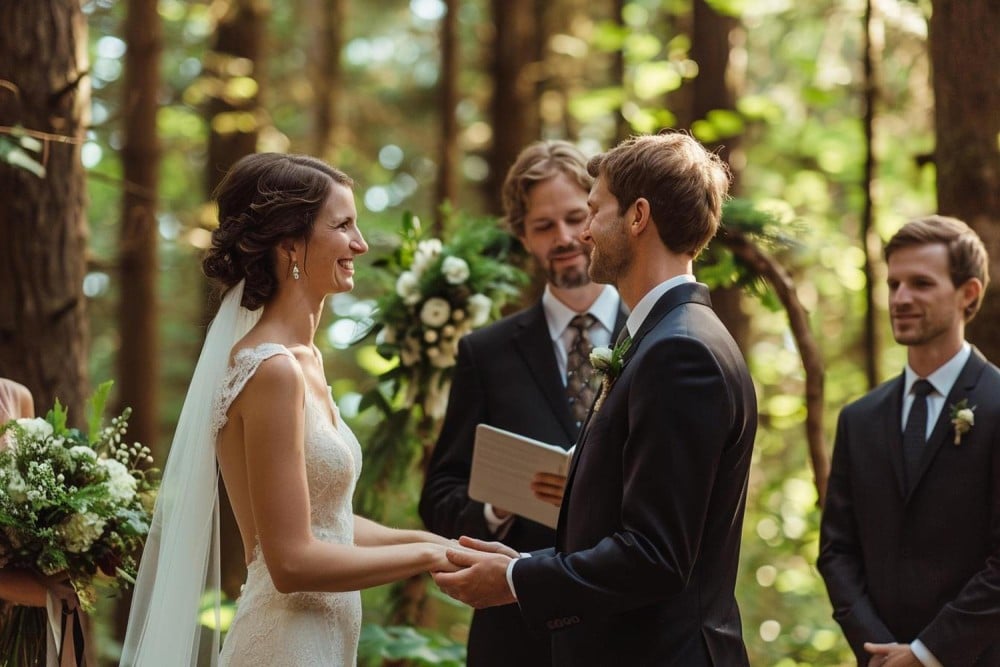 How to become a wedding officiant in tennessee ?Read more
How to become a wedding officiant in tennessee ?Read more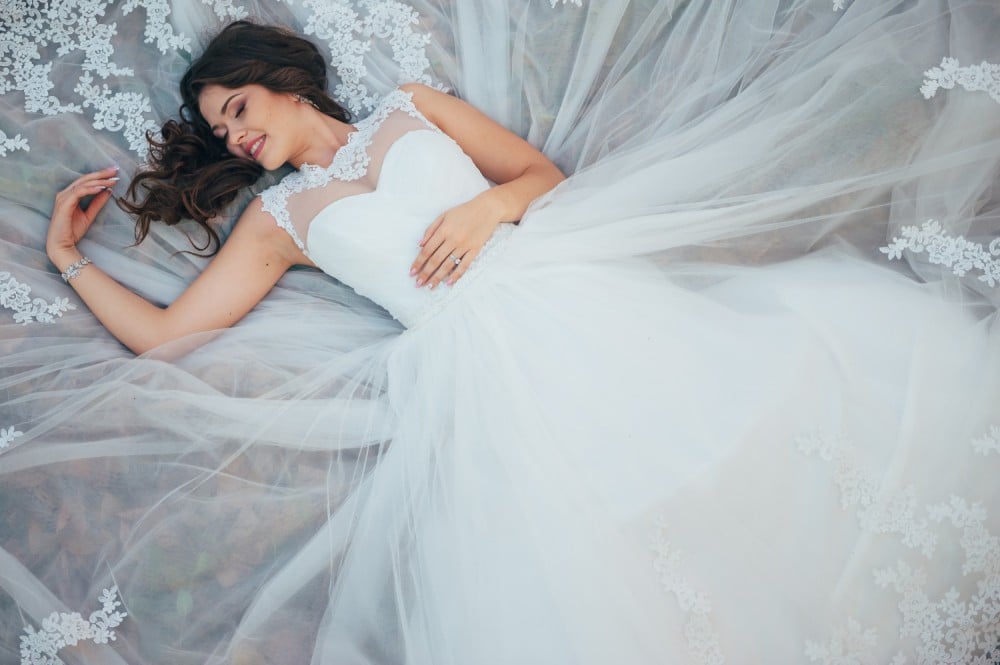 How to bustle a tulle wedding dress ?05/21/2024Posted in: Wedding Fashion & StyleRead more
How to bustle a tulle wedding dress ?05/21/2024Posted in: Wedding Fashion & StyleRead more Planning Your Honeymoon Tips for an Unforgettable Trip05/20/2024Posted in: Wedding PreparationsRead more
Planning Your Honeymoon Tips for an Unforgettable Trip05/20/2024Posted in: Wedding PreparationsRead more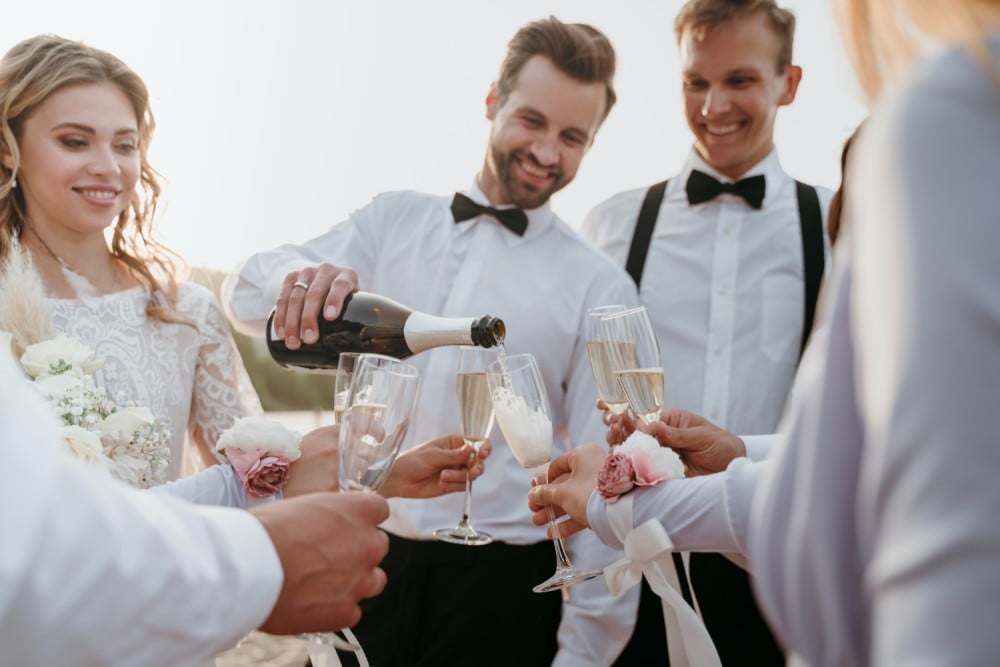 The Dos and Donts of Wedding Guest Etiquette05/16/2024Posted in: Wedding Traditions & EtiquetteRead more
The Dos and Donts of Wedding Guest Etiquette05/16/2024Posted in: Wedding Traditions & EtiquetteRead more The Importance of PreWedding Counseling What You Should Know05/13/2024Posted in: Wedding PreparationsRead more
The Importance of PreWedding Counseling What You Should Know05/13/2024Posted in: Wedding PreparationsRead more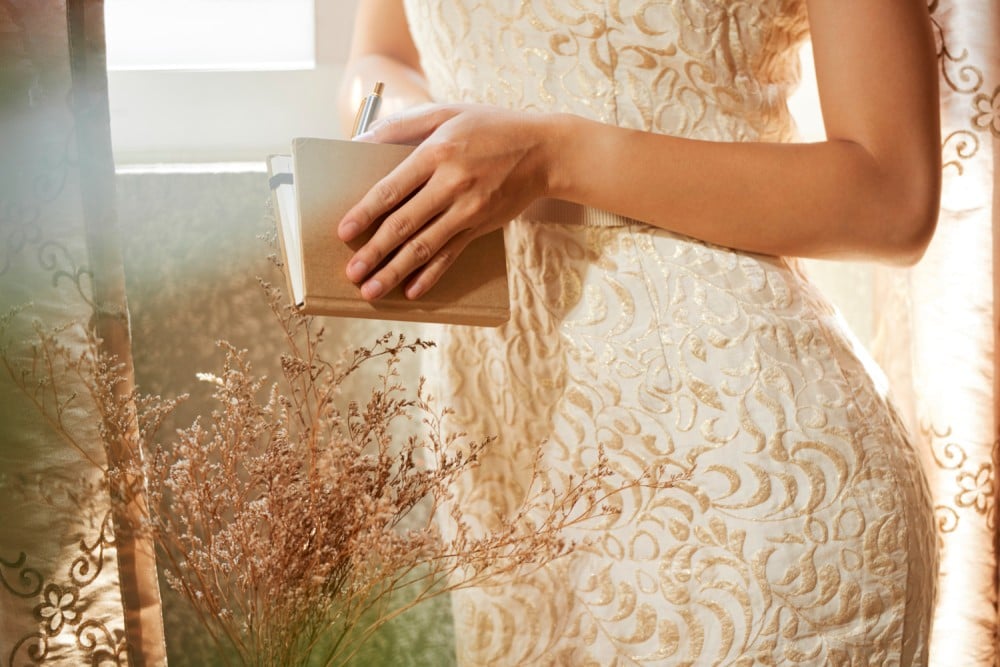 Can I wear beige to a wedding ?11/14/2023Posted in: Wedding Fashion & StyleOne of the most common questions when it comes to wedding guest attire is whether it's appropriate to wear beige to a...Read more
Can I wear beige to a wedding ?11/14/2023Posted in: Wedding Fashion & StyleOne of the most common questions when it comes to wedding guest attire is whether it's appropriate to wear beige to a...Read more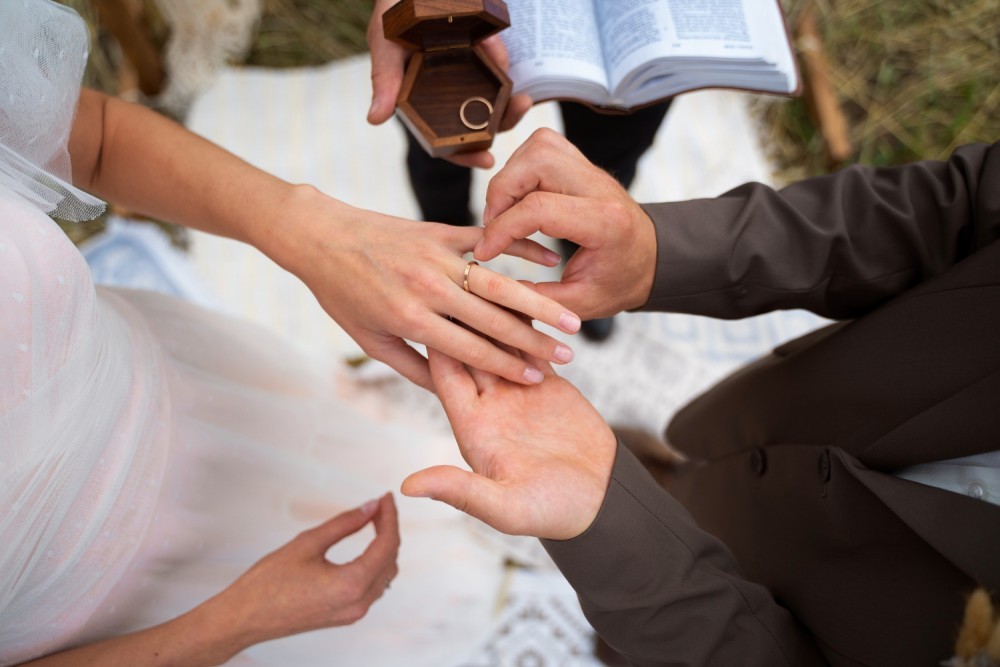 Do Jehovah Witnesses celebrate weddings ?02/29/2024Posted in: Wedding Traditions & EtiquetteJehovah’s Witnesses are known for their distinctive beliefs and practices, but what about weddings? In this...Read more
Do Jehovah Witnesses celebrate weddings ?02/29/2024Posted in: Wedding Traditions & EtiquetteJehovah’s Witnesses are known for their distinctive beliefs and practices, but what about weddings? In this...Read more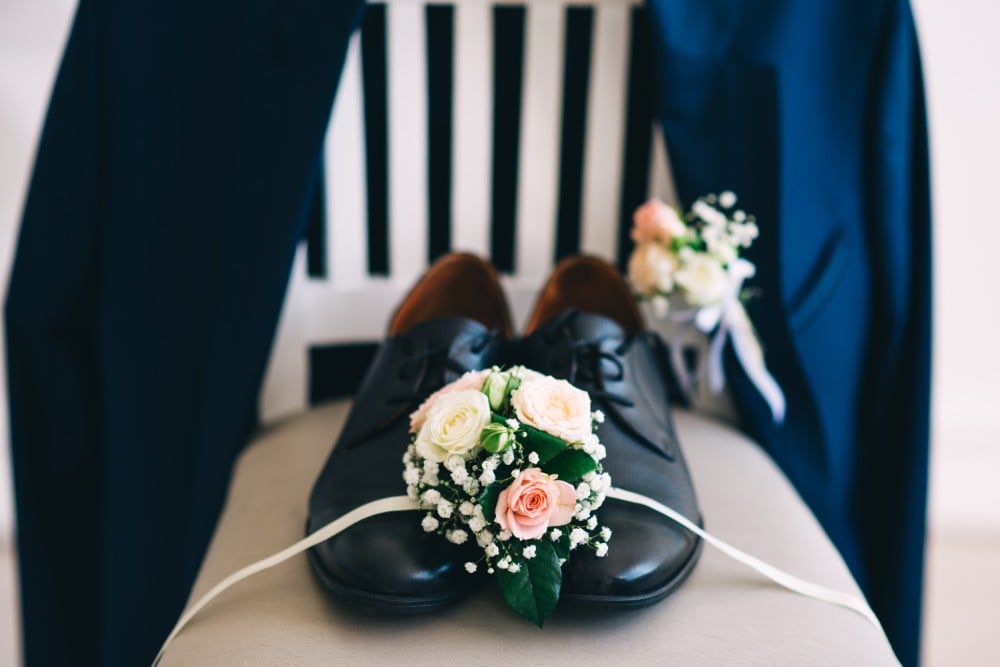 What color shoes with navy dress for Wedding ?08/20/2023Posted in: Wedding Fashion & StyleMatching shoe color with navy dress When teaming shoe color with a navy dress, it's essential to decide on a hue...Read more
What color shoes with navy dress for Wedding ?08/20/2023Posted in: Wedding Fashion & StyleMatching shoe color with navy dress When teaming shoe color with a navy dress, it's essential to decide on a hue...Read more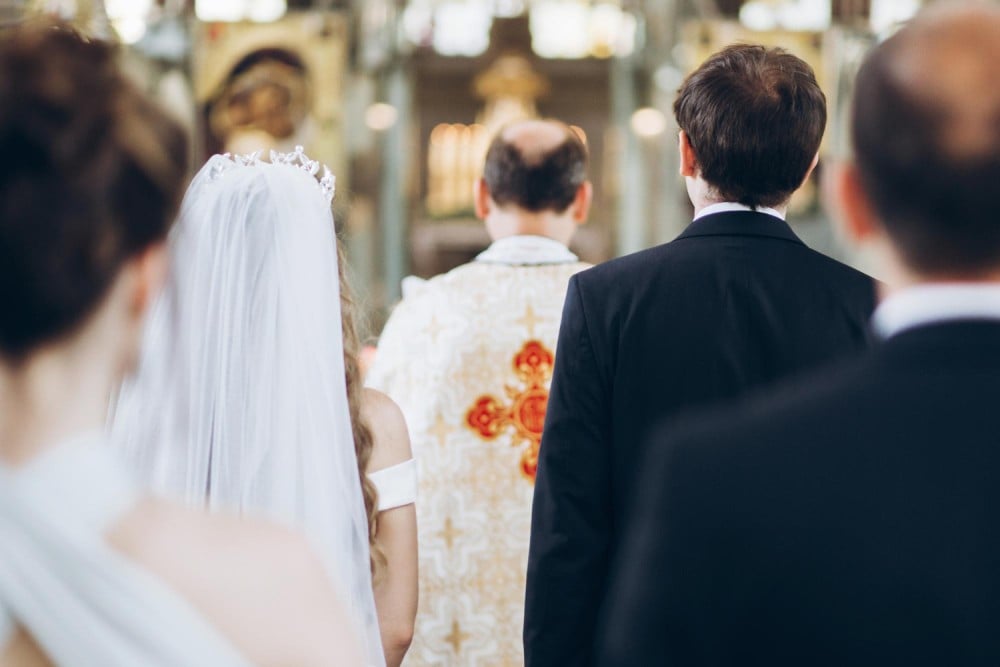 What to wear to a Church Wedding ?09/04/2023Posted in: Wedding Fashion & StyleAre you attending a church wedding and unsure about the dress code? Our latest article provides a deep dive into the...Read more
What to wear to a Church Wedding ?09/04/2023Posted in: Wedding Fashion & StyleAre you attending a church wedding and unsure about the dress code? Our latest article provides a deep dive into the...Read more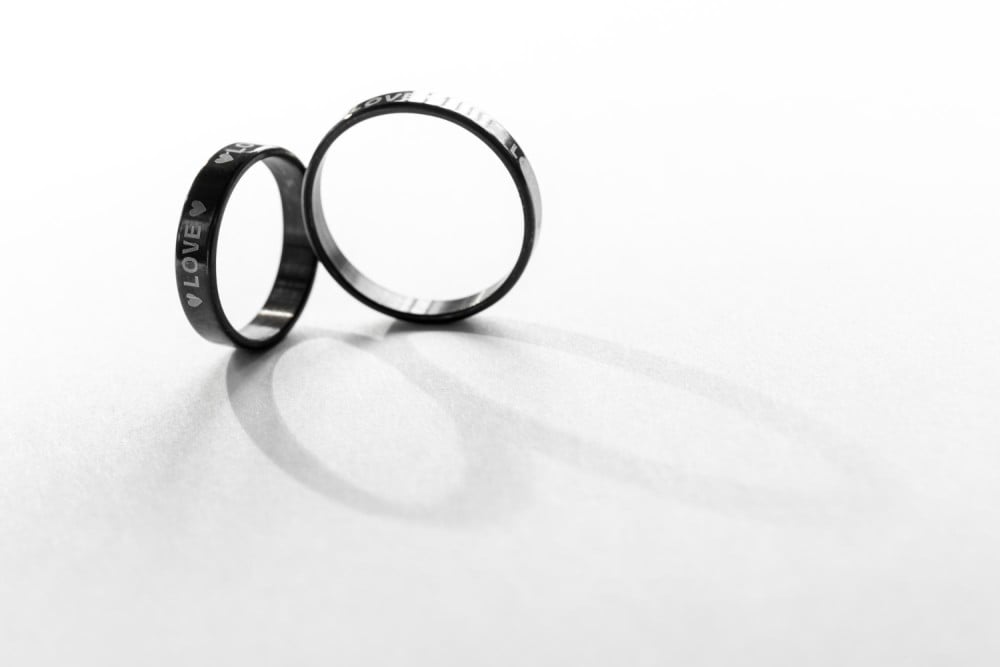 What does a black wedding ring mean ?06/12/2023Posted in: Miscellaneous Wedding AspectsWedding rings are a traditional symbol of love and commitment, but their style and design can vary greatly. In recent...Read more
What does a black wedding ring mean ?06/12/2023Posted in: Miscellaneous Wedding AspectsWedding rings are a traditional symbol of love and commitment, but their style and design can vary greatly. In recent...Read more How to become a wedding officiant in tennessee ?06/27/2024Looking to become a wedding officiant in Tennessee but not sure where to start? This comprehensive guide will walk...Read more
How to become a wedding officiant in tennessee ?06/27/2024Looking to become a wedding officiant in Tennessee but not sure where to start? This comprehensive guide will walk...Read more How to bustle a tulle wedding dress ?05/21/2024Posted in: Wedding Fashion & StyleAre you a bride-to-be with a tulle wedding dress and wondering how to bustle it for the big day? Look no further!...Read more
How to bustle a tulle wedding dress ?05/21/2024Posted in: Wedding Fashion & StyleAre you a bride-to-be with a tulle wedding dress and wondering how to bustle it for the big day? Look no further!...Read more Planning Your Honeymoon Tips for an Unforgettable Trip05/20/2024Posted in: Wedding PreparationsPlanning your honeymoon is an exciting and important step in beginning your life together as a married couple. From...Read more
Planning Your Honeymoon Tips for an Unforgettable Trip05/20/2024Posted in: Wedding PreparationsPlanning your honeymoon is an exciting and important step in beginning your life together as a married couple. From...Read more The Dos and Donts of Wedding Guest Etiquette05/16/2024Posted in: Wedding Traditions & EtiquettePlanning to attend a wedding soon? Make sure you brush up on your wedding guest etiquette to ensure you have a great...Read more
The Dos and Donts of Wedding Guest Etiquette05/16/2024Posted in: Wedding Traditions & EtiquettePlanning to attend a wedding soon? Make sure you brush up on your wedding guest etiquette to ensure you have a great...Read more The Importance of PreWedding Counseling What You Should Know05/13/2024Posted in: Wedding PreparationsAre you and your partner considering pre-marriage counseling but not sure what to expect? This article is here to...Read more
The Importance of PreWedding Counseling What You Should Know05/13/2024Posted in: Wedding PreparationsAre you and your partner considering pre-marriage counseling but not sure what to expect? This article is here to...Read more








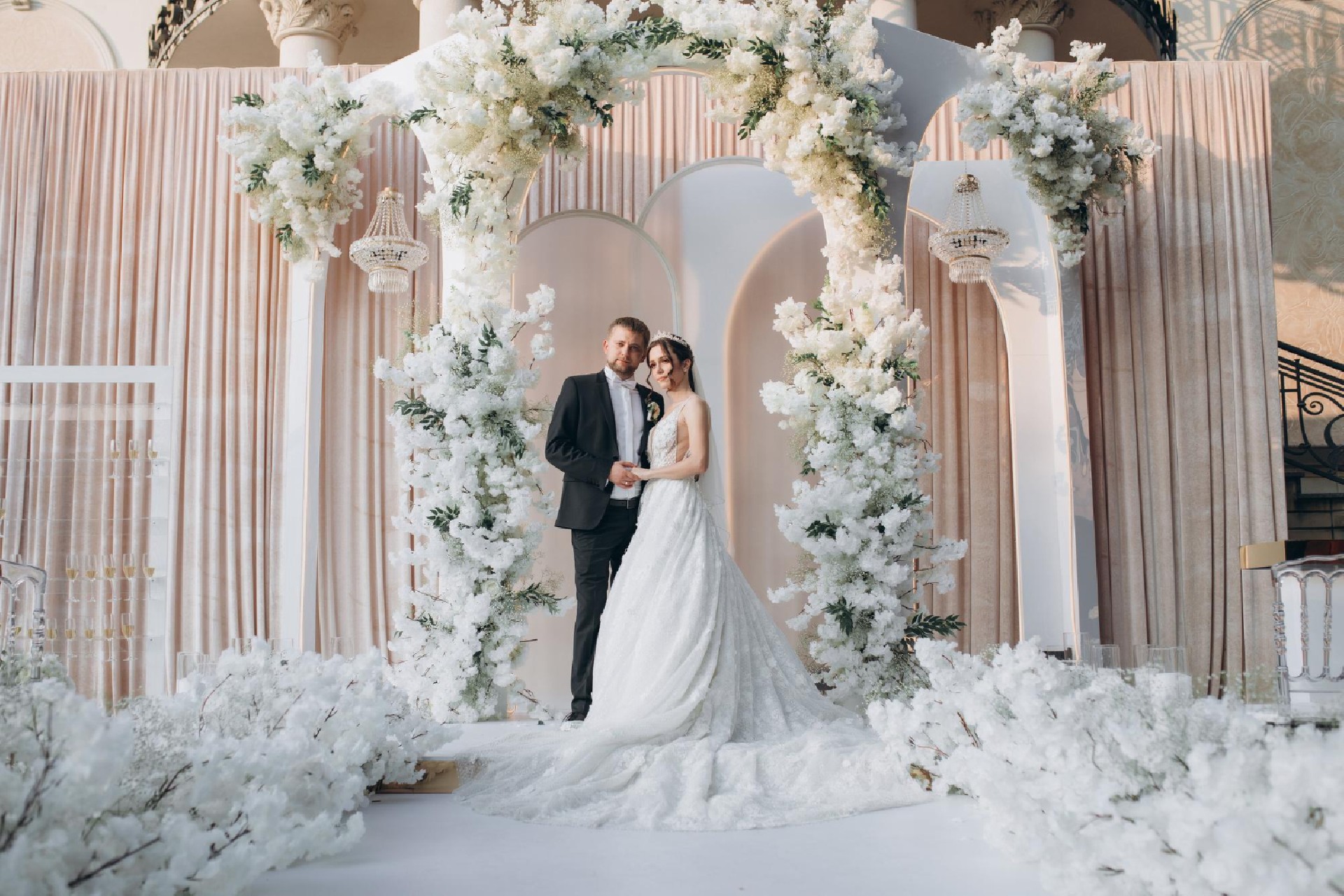


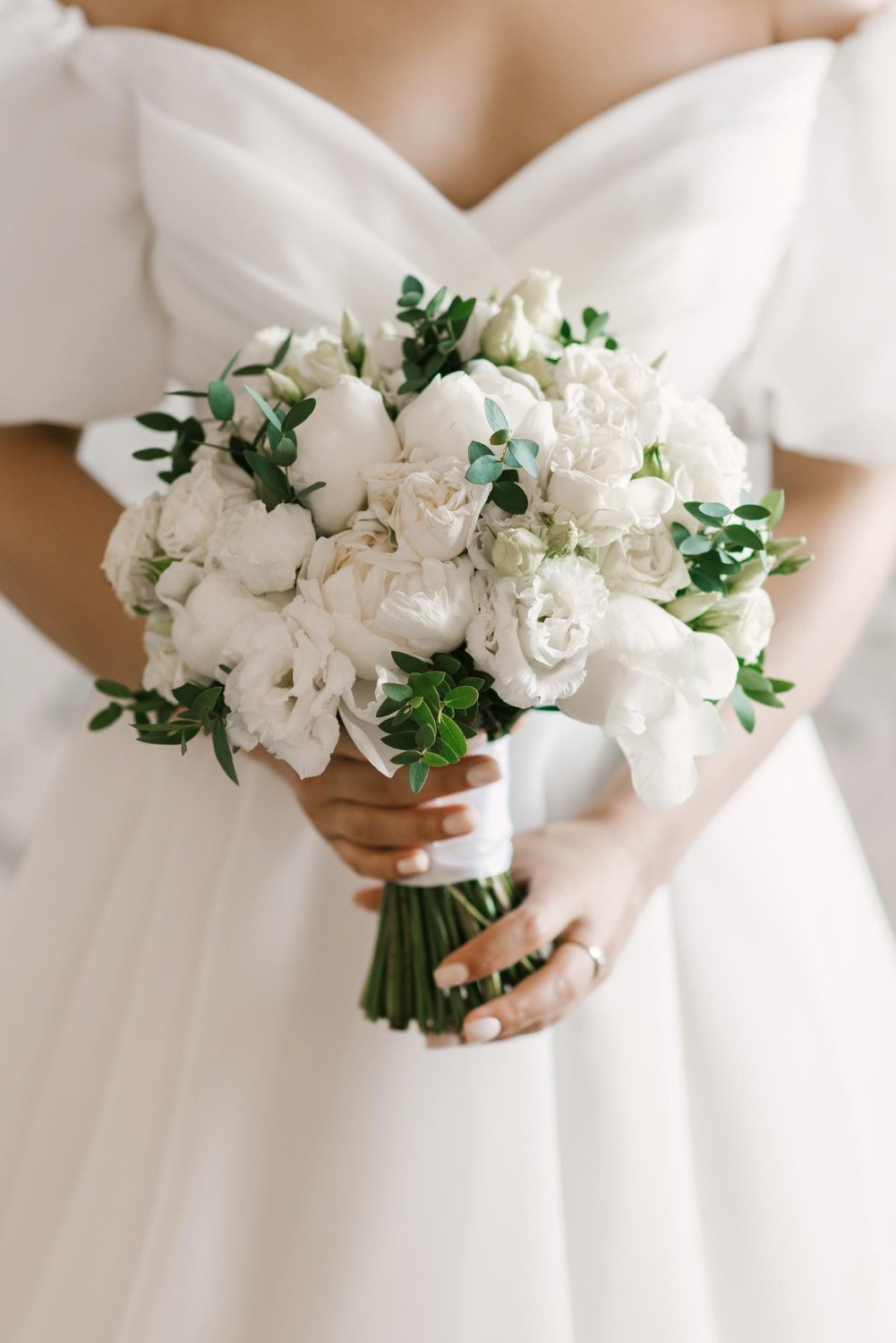
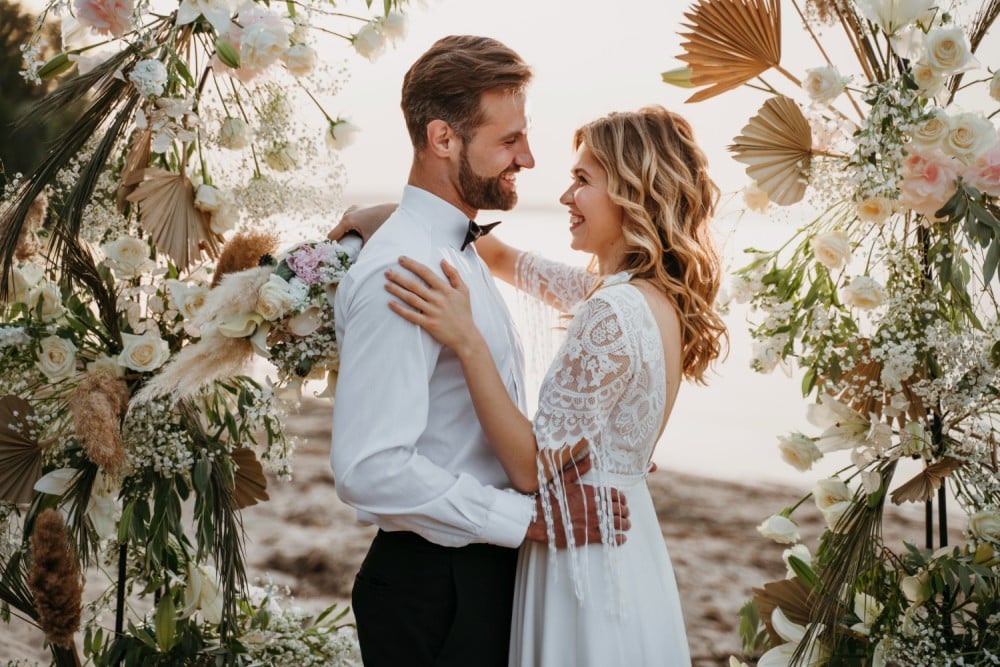
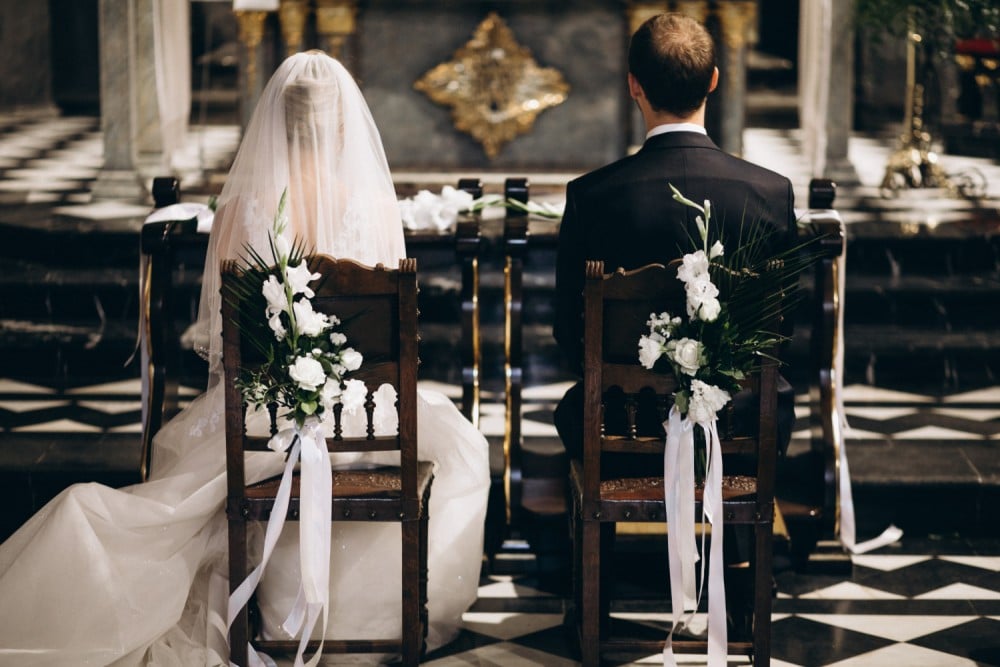
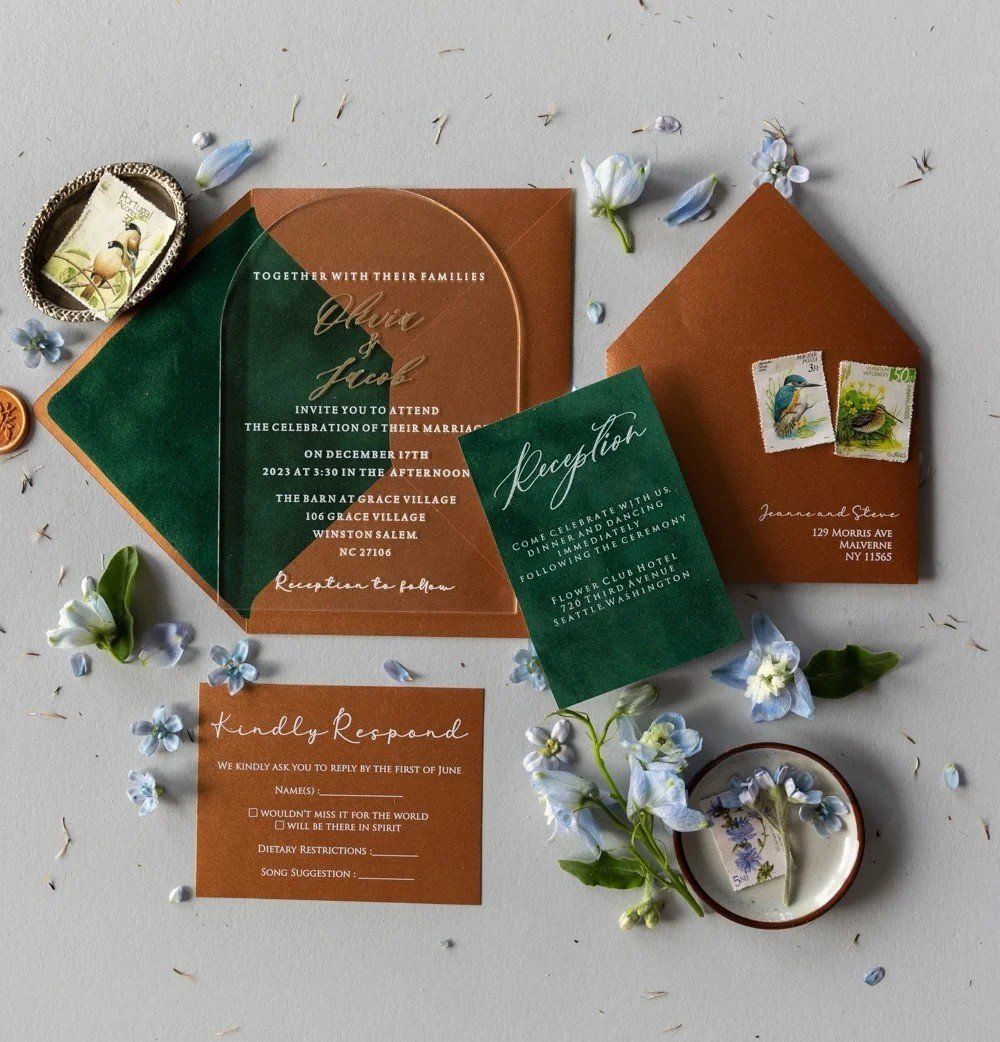
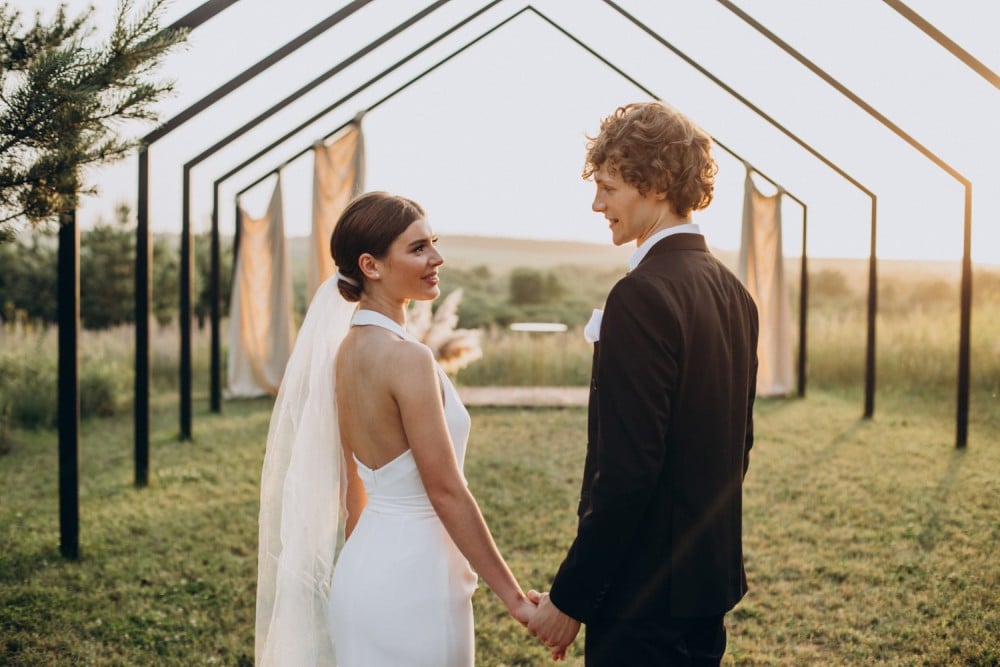
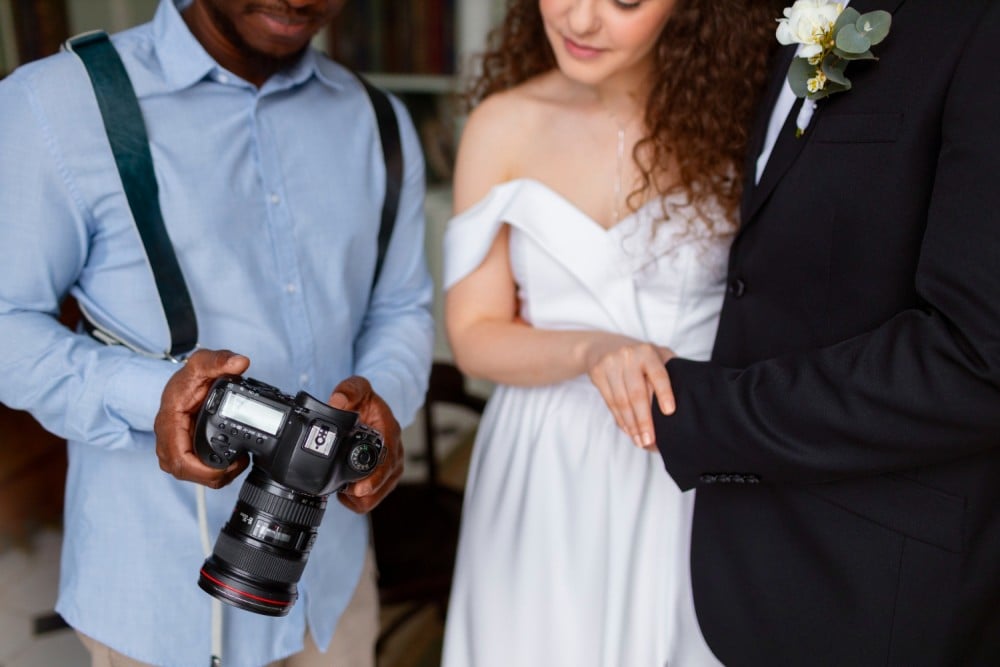
Top authors